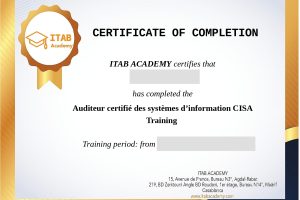Navigating the Intersection of Marketing and Digital: Strategies for Success
In today’s rapidly evolving landscape, the convergence of marketing and digital channels has become paramount for businesses striving to stay ahead of the curve. This fusion presents both challenges and opportunities, demanding a comprehensive understanding of consumer behavior, technological advancements, and strategic deployment of resources. In this article, we delve deep into the dynamics of marketing in the digital era, exploring key trends, strategies, and best practices to navigate this complex intersection effectively.
**Understanding the Digital Transformation of Marketing**
The digital revolution has reshaped the way businesses engage with their audience, requiring a shift from traditional to digital-centric marketing strategies. With the proliferation of smartphones, social media platforms, and e-commerce portals, consumers are increasingly connected and empowered, driving the need for brands to adopt an omnichannel approach to reach, engage, and convert prospects into loyal customers.
**Key Trends Shaping the Marketing Landscape**
1. **Data-Driven Decision Making**: In the digital realm, data reigns supreme. Leveraging advanced analytics tools, businesses can extract actionable insights from vast volumes of data, enabling personalized marketing campaigns, targeted advertising, and predictive modeling to optimize performance and ROI.
2. **Content is King**: Content marketing continues to be a cornerstone of digital strategy, providing value to consumers, building brand credibility, and driving organic traffic. From blog posts and videos to podcasts and social media posts, compelling content tailored to the preferences and interests of the target audience can foster meaningful connections and drive conversions.
3. **The Rise of Influencer Marketing**: Influencers wield significant influence over consumer purchasing decisions, particularly in sectors such as fashion, beauty, and lifestyle. Collaborating with influencers can amplify brand awareness, enhance credibility, and tap into niche audiences that align with the brand’s values and offerings.
4. **Ephemeral Content and Storytelling**: Platforms like Instagram Stories, Snapchat, and TikTok have popularized ephemeral content, providing brands with an opportunity to engage audiences in real-time, authentic storytelling. By leveraging the fleeting nature of ephemeral content, marketers can create a sense of urgency, FOMO (fear of missing out), and foster a deeper connection with followers.
**Strategies for Success in the Digital Age**
1. **Customer-Centric Approach**: Understanding the needs, preferences, and pain points of your target audience is crucial for crafting effective digital marketing campaigns. Conducting thorough market research, collecting customer feedback, and analyzing behavioral data can provide valuable insights to tailor messaging, product offerings, and user experiences that resonate with your audience.
2. **Omni-channel Marketing Integration**: Seamlessly integrating multiple digital channels such as social media, email, search, and mobile ensures consistent brand messaging and a cohesive user experience across touchpoints. By meeting consumers where they are and delivering personalized, relevant content at every stage of the buyer’s journey, businesses can enhance engagement, drive conversions, and foster brand loyalty.
3. **Continuous Optimization and Experimentation**: The digital landscape is inherently dynamic, requiring marketers to embrace a culture of experimentation and continuous optimization. A/B testing, multivariate testing, and data-driven iteration enable marketers to refine strategies, identify high-performing tactics, and adapt to evolving consumer trends and preferences.
4. **Embrace Emerging Technologies**: From artificial intelligence and machine learning to augmented reality and voice search, embracing emerging technologies can provide a competitive edge in the digital marketplace. Whether it’s deploying chatbots for customer support, implementing personalized recommendations using AI algorithms, or creating immersive brand experiences through AR, staying abreast of technological innovations is essential for staying ahead of the curve.
In conclusion, the marriage of marketing and digital has fundamentally transformed the way businesses connect with consumers, driving the need for agility, innovation, and strategic adaptation. By understanding the key trends shaping the digital landscape and implementing effective strategies to engage, delight, and retain customers, businesses can thrive in an increasingly competitive environment and seize opportunities for growth and success.




